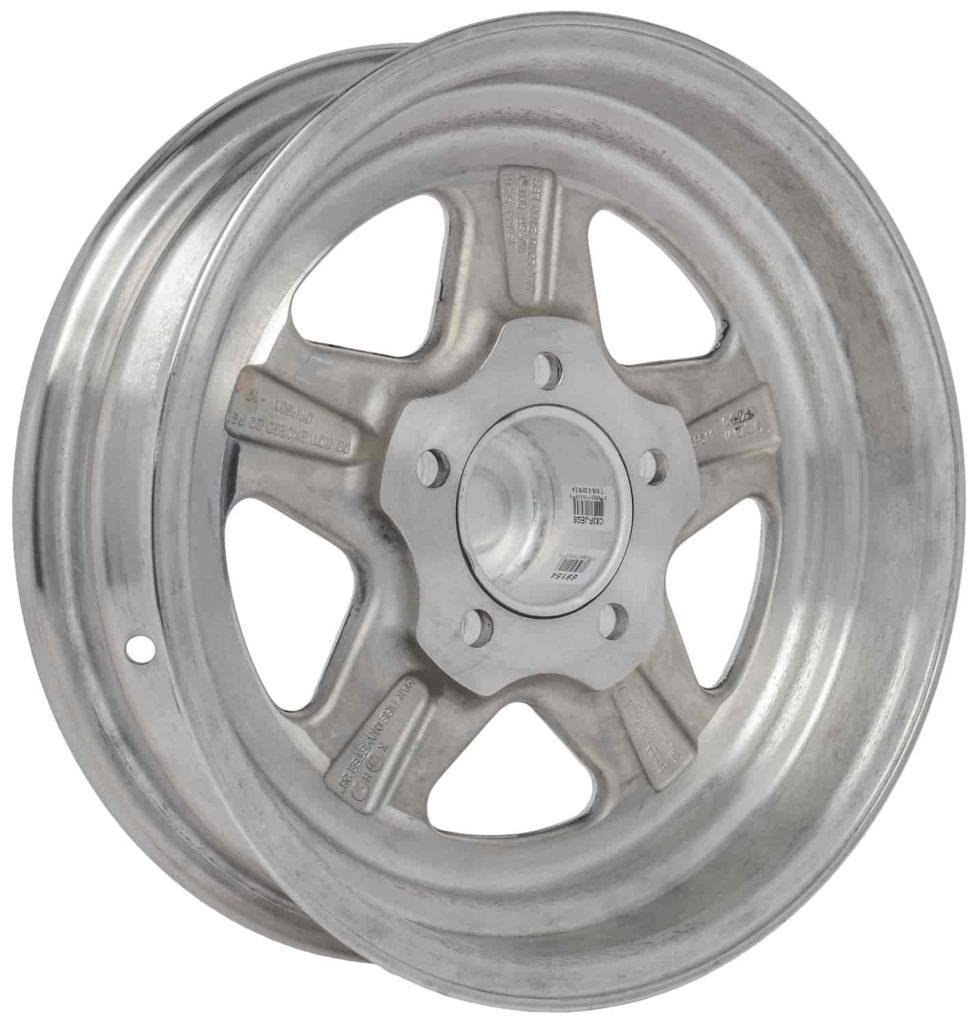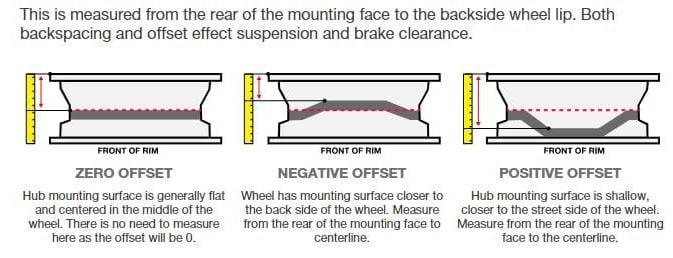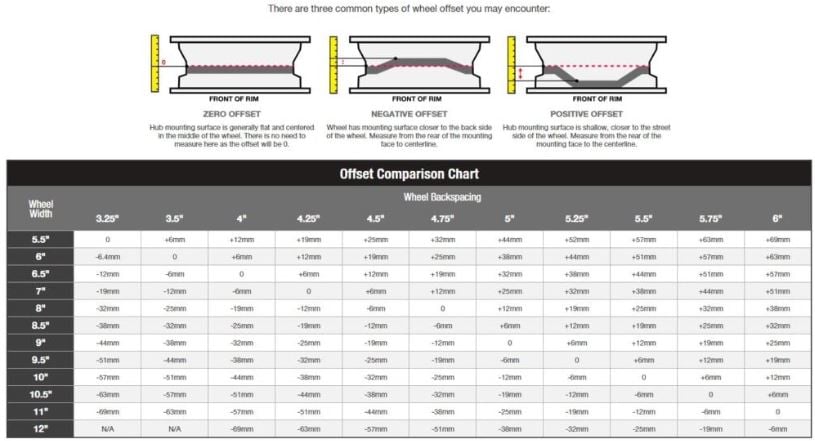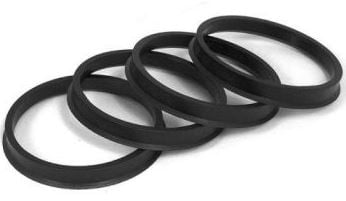Sign up now to join the JEGS email newsletter and be the first to learn about new products, special deals and e-mail only offers!


There's seldom a reason to think about wheel measurements unless you're shopping new wheels for your car or truck. On your daily driver or classic car restoration, it’s almost exclusively about achieving the look you find attractive. But for high performance vehicles, muscle cars, and race vehicles, aspects like wheel offset and backspacing affect how well your car can perform.
A lot of drivers – and even tire shops – might tell you that wheel offset and backspacing are the same thing, but they definitely aren’t. And when they try to direct your focus to other wheel measurements like width, diameter, and bolt pattern above all, there’s a great chance you’ll be leaving something on the table afterward: your traction.
Here’s what you need to know about the difference between wheel backspacing and offset, how they fit into your wheel purchase, and other measurements you should consider.
Wheel backspacing is a measurement that determines how much distance there is from the inner flange, or axle pad, to the inside wheel edge, or inboard flange. It’s normally measured in inches, and it’s an important figure to make sure your new wheels have the clearance they need to fit.
Measuring a wheel’s backspacing requires a flat edge that can span across the inboard flange and a tape measure. To get the measurement:
When you’re searching for wheel listings, the backspacing can be expressed as a decimal or a fraction, so you may need to convert your measurement. Whole inches are left alone, but simply Google to convert the fraction to a decimal and vice-versa. As an example, one-eighth (1/8) converts to .125, so a backspace of 3 1/8 inches would be expressed as 3.125 inches.
This is the figure that’s going to ensure your new wheels aren’t rubbing the frame, suspension, wheel well liner, or anything else tucked behind it in the wheel well. If you choose wheels that are wider due to a larger wheel back spacing, there’s potential to rub. Obviously, that’s not a great idea.
However, if you have the extra space, you can add wheel width which can allow for wider tires to be installed. And that, in turn, gives you the ability to achieve more traction.
If you plan to increase backspacing, measure how much clearance you have from the tire to every item behind it, then add the extra clearance to your backspace measurement minus a half-inch minimum.

Wheel offset is measured differently. It’s the measurement of the wheel mounting surface in relation to the centerline, and it’s expressed as a positive or negative number as it relates to that position. When the wheel’s mounting surface is further toward the outer flange, it’s called positive offset, and when it’s set further back toward the inboard flange, it’s negative offset.
Either way, the offset is measured in millimeters. Yes, it’s odd that manufacturers switch back and forth so frequently between imperial and metric, but that is the measurement standard in the wheel industry.
Practically speaking, large amounts of positive offset achieve an appearance where the wheel face is nearly in line with the outer flange. And with a big increase in negative offset, you’ll get the deep dish look.
Measuring wheel offset is fickle, and not easy to do accurately. If you’re looking to change the offset, the most common practice is to determine how much movement you’d like in or out, then apply it to your factory wheel offset.

Sign up now to join the JEGS email newsletter and be the first to learn about new products, special deals and e-mail only offers!

Offset can tuck your tires further into the wheel well, which might be necessary if new tires have a wider section width than your OEM tires. Or, adding negative offset can bump your wheels further out, adding track width for stability.
However, if you’re installing wider tires, it can be quite complicated to calculate the offset that will still work. Testing wheel fitment is usually the best practice, but it is possible to work out the numbers.
If you’re adding one inch of width to your wheel with the same offset, you’ll add 12.7mm backspacing as well as 12.7mm to how much the wheel protrudes at the front. That’s half an inch each side. But if you only have a quarter-inch of space for the outer edge to still clear the wheel lip, you’ll need to adjust your offset 6.4mm positive, plus there will need to be at least ¾ inch clearance in the wheel well for the additional backspacing. In some cases, custom offsets will be required, which can limit the wheels you can use for your application.
Enter the following values (leave the field blank for the measurement you want to find):
Wheel Width (in inches):
Backspacing (in inches):
Offset (in mm):
There are a couple of other things to consider, even though it might seem pedestrian. The bolt pattern on your new wheels must be the same as what your vehicle is equipped with. Clearly, they won’t fit if your bolt pattern is off, even by what seems like a fraction of an inch.
As well, make note of the center bore size. If the center bore on the wheels is too small compared to your car, there’s no chance it will fit flat against the hub face. And if you have hub-centric wheels that are too large, you’ll need to find a set of hub centric rings to fill the gap. No need to deal with hub centric rings if the rims are bolt centric.

Are wheel offset and backspacing the same? No. Are they closely related? Yes. When you’re shopping for a new set of rims for any type of vehicle, these measurements are both crucial to ensuring they fit properly.
Need help finding wheels to fit your car, or want assistance calculating how much wider you can go? At JEGS, our experts are always here to help. We can help you with advice on the best wheels to fit your project and your budget, not to mention tires to go on them.
wamt to buy mag rims 15s for my s-10 so i want them to stick out about 4 inch how much would it cost me if i get wheels and tires from you guys i dont want the big tires or the low profile ones just the 5 spook rims and tires that have about 4 inchs from rim to top of therd
Richard, we need additional info and want to go over some options with you to ensure we give you accurate pricing and what you are looking for. Please call us at 1-800-345-4545. We are open 7 am-Midnight EST Monday through Friday and 8:00 am-11:00 pm on Saturday and Sunday.




Leave a Reply